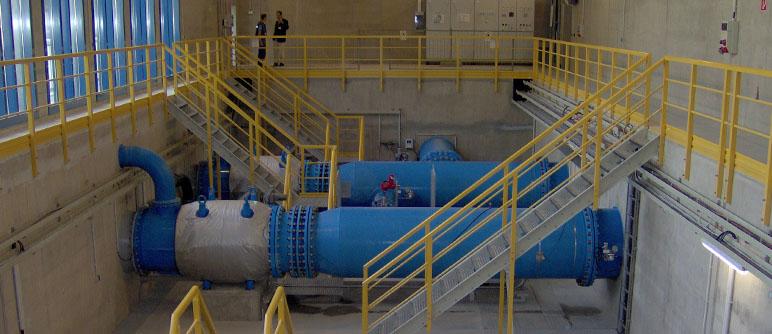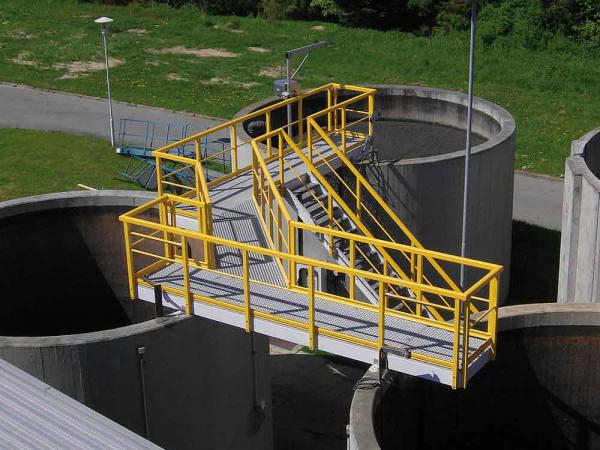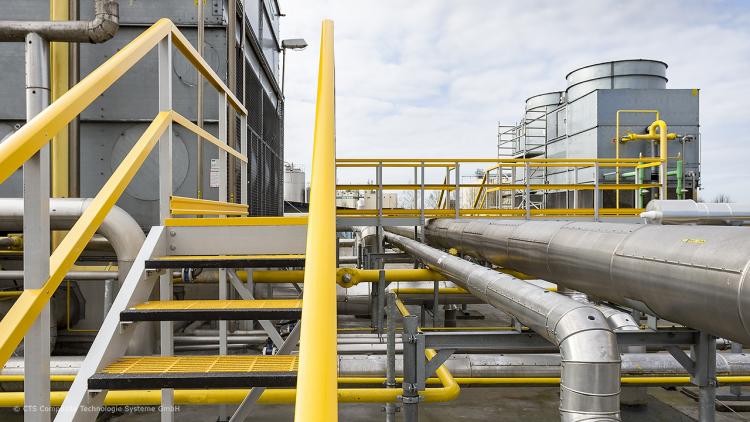The chemicals industry is relying on the many benefits of composites more and more. Where rusty and high-maintenance steel structures were once used, now CTS solutions are increasingly being used – consisting of GRP construction profiles and GRP gratings.
The material's virtually 100% resistance against aggressive media such as acids and alkalis as well as its high level of corrosion resistance ensure a long service life with low maintenance costs. Many of the structures for purification plants and electroplating systems are pre-manufactured in the main CTS plant, so that the installation times and costs on site are kept to a minimum.
In addition to cost-effectiveness, another benefit is occupational safety. In production areas, such as machine and plant manufacturing, where oils and other lubricants are used, the paths and floor areas leading to the machines are extremely slip-resistant thanks to GRP.
Many uses
- Platforms
- Gangways and Walkways
- Bridges
- guard-rail systems
- Stairs / Ladders
- Drain and shaft covers
- Concrete renovation / cladding
Advantages of GRP
- Extremely resistant to corrosion and saltwater
- Low weight but high rigidity
- No formation of rust or decay
- Non-magnetic, no spark formation
- Non-slip, comfortable to walk on
- Long lifetime - minimal maintenance costs
- Simple, cost-effective assembly
Stair towers and crossings
Wastewater treatment plants once produced their stair towers and crossings predominantly from galvanised steel or stainless steel. Yet here too, a more cost-efficient and safe alternative is now increasingly being used – GRP construction profiles and gratings.
The benefits of GRP in structural engineering include light weight, simple processing and installation, durability and low maintenance costs. The high level of slip resistance (R13) of the grates and stairs also contributes to increased occupational safety.
With around 900 GRP steps with a width of 1,500 mm, the stair system at the Leibes-Lichte Dam is one of the largest CTS projects to date. The platforms, railings and paths in the machine rooms were also made entirely of GRP.




